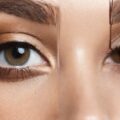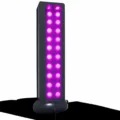Transitions lenses, also known as photochromic lenses, are eyeglasses that darken when exposed to sunlight and return to a clear state in the absence of UV rays. But beyond the convenience and aesthetic appeal, these innovative lenses offer several health benefits. In this article, we’ll explore how Transitions lenses can contribute to your overall eye health and wellness.
The Science Behind Transitions Lenses
Transitions lenses are equipped with special photochromic dyes that react to UV light. When you step outdoors and the sunlight hits your glasses, these dyes activate, causing the lenses to darken. This process helps to reduce glare and eye strain. Once you go back inside, the lenses quickly adapt back to their clear state.
Protection Against UV Rays
One of the main health benefits of Transitions lenses is their ability to block 100% of harmful UVA and UVB rays. Prolonged exposure to these rays can increase the risk of cataracts and macular degeneration, so wearing protective eyewear like Transitions can be a crucial preventative measure.
Reducing Eye Strain and Fatigue
By automatically adjusting to the level of light around you, Transitions lenses can help reduce eye strain and fatigue. This is especially beneficial for individuals who spend a lot of time switching between indoor and outdoor environments throughout the day.
Enhanced Visual Comfort
Transitions lenses improve visual comfort by providing the right amount of shading. This means you can enjoy outdoor activities without squinting or being bothered by changes in light. It’s a seamless transition that promotes comfort and clear vision.
Convenience and Versatility
Another indirect health benefit is the convenience of not having to switch between prescription glasses and sunglasses. This versatility means you’re more likely to protect your eyes since you won’t be caught without your sunglasses when you need them.
FAQ About Transitions Lenses
Do Transitions lenses replace sunglasses?
While Transitions lenses offer UV protection and reduce glare, they may not replace sunglasses in every situation. For instance, when driving, car windshields block some UV light, preventing the lenses from darkening fully. In such cases, traditional sunglasses might be necessary.
How long do Transitions lenses last?
Transitions lenses typically last as long as a standard pair of prescription lenses. On average, they should be replaced every two to three years, or as recommended by your eye care professional.
Can Transitions lenses get dark in cold weather?
Yes, Transitions lenses can darken in cold weather. In fact, they may get even darker in lower temperatures.
Are Transitions lenses suitable for children?
Absolutely. Children’s eyes are more sensitive to UV radiation, and Transitions lenses can provide the necessary protection while they’re outdoors.
Do Transitions lenses come in different colors?
Yes, Transitions lenses are available in various colors to fit personal style preferences and vision needs.









